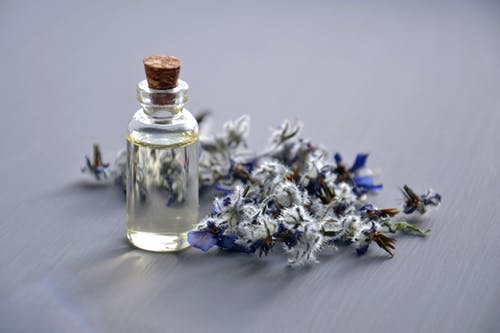
The dawn of a new year seems like a time of hope for the future and excitement for the year to come. Whether in place of those or alongside them, up to a quarter of the population of the U.S. can have opposite feelings due to Seasonal Affective Disorder.
Everyone’s experience with SAD is different and can range from “the winter blahs” to major depression. Common symptoms include changes in sleep patterns (like sleeping more than usual), changes in appetite (like craving carbohydrates or increased consumption of food), drop in energy level, restlessness, irritability and weight gain. More serious symptoms include hopelessness, feelings of worthlessness and even thoughts of suicide.* The good news is that for the vast majority of people who suffer from it, there are some simple ways to combat seasonal depression.

1. Being exposed to sunlight
Since SAD is thought to be caused by the limited amount of sunlight in our area this time of year, getting out in the sun, or at least attempting to given the circumstances, is one of the most important things you can do to combat seasonal depression. The typical recommendation is 20 minutes of outdoor time a day, but when the temperature is anywhere below 50 degrees, I’m not interested in being outside for any reason.
While it’s believed that natural light, if you can get it, is much more potent than the artificial version and that fresh air and nature can help lift your mood, one of the strategies that I’ve felt works best for me (because I actually use it) is the use of a lightbox. There are countless sizes and shapes of devices that mimic sunlight. I have a small one that sits on my dresser that I use while I’m getting ready for the day. If my experience is any indication, it can take as little as 20 minutes a day to feel the effects.

2. Ingesting vitamin D
At least one medical study has found a correlation between low vitamin D levels and some form of depression in the winter. One function of vitamin D is releasing neurotransmitters like serotonin and dopamine which are nicknamed the “happy molecule” and the “feel-good hormone,” so you can imagine what happens when you’re not getting enough of it. Because the sun is what typically makes vitamin D out of a substance that’s already in your body and, as previously discussed, we don’t get enough sunlight in Kentucky in the winter, there’s a really good chance we’re not naturally getting enough vitamin D.
The good news is that you can help combat seasonal depression through eating. Eating foods like eggs, yogurt and mushrooms is the best way to get your fill, but supplements work too. If you want help shopping for foods that are full of vitamin D, you can get in touch with our dietitian, Kathryn, at kathrynd@goodfoods.coop. Our Wellness Coordinator, Shula, can also help you pick out the right supplements. Her email address is shula@goodfoods.coop.

3. Eating well and exercising
Some people have mild enough symptoms that they can help combat seasonal depression just by staying on track with nutrition and fitness routines. Especially around the holidays, and when the weather is extra cold, it’s easy to subsist on things like cookies and macaroni and cheese. While occasional treats do boost mood and are actually an important part of a balanced diet, those aren’t great things to eat for every meal if for no other reason than they can make you feel even more sluggish and down than you already do.
Cutting back on carbs and sugar is just the first step though. Cleveland Clinic recommends increasing your intake of fatty fish which can help fight depression, dark chocolate which can trigger endorphin release and nuts which can help boost energy levels.
Exercise has lots of benefits including the release of dopamine, one of the brain chemicals that makes your brain happy, so, while it may be more of a struggle to actually do it in the winter months, it could be even more worth it than usual. You don’t have to run a marathon or become a powerlifter to see a difference either. Just a walk around the block could help and combining your movement time with your outdoor time can add extra benefits. Pro tip: Dietitian Kathryn can also help you pick out foods that can boost your mood and walk you through the “movement” portion of Intuitive Eating. Send her an email if you’re interested.

4. Cultivating coziness
When my friend moved back to Kentucky after four years of enduring school in northern Indiana, she took it upon herself to get me to embrace winter instead of loathing it like I always had before. The first tip she had for me was to be comfortable and, for some reason, this blew my mind. It wasn’t until that moment that I realized that, in addition to the lack of sunlight affecting my brain, I hated winter because I hate being cold, but I was doing nearly nothing to prevent it.
This epiphany prompted me to do things like invest in a coat that was actually functional, not skimp on outdoor accessories and focus on footwear (e.g. not wearing ballet flats when it’s 20 degrees outside). Just dressing appropriately for the weather has been a huge game-changer. Shelby, a blogger for Healthline, has a whole SAD comfort kit which includes a seasonal upgrade of her living space which I’ve also come to adopt partially to cater to the physical comfort element, but also to help with psychological comfort. My winter home additions include blankets out in the open even though I usually regard them as clutter, winter decorations that take the place of my Christmas ones, a humidifier, and, my personal favorite, an absurd amount of candles. Shelby says making little changes “all these cold-weather comforts help me focus on the charm of winter, instead of the cold weather and short days it brings.”

5. Using essential oils
The fact that I have a diffuser in my bedroom, bathroom, living room and car and a roll-on in my purse currently probably says something about my everyday essential oil use, but I use them even more in the winter to combat seasonal depression. Studies show that “inhalation of essential oils can communicate signals to the olfactory system and stimulate the brain to exert neurotransmitters (e.g. serotonin and dopamine) thereby further regulating mood” and if ever I needed a mood boost, it’s when Christmas is over and the days are about as bright as the nights.
I don’t have any medical evidence that essential oils make me feel better, but I do feel it and that’s all that matters as far as I’m concerned. My current bathroom blend of lemon and clary sage** helps me to wake up and get ready to take on the day when, in the past, I would be 100% against both waking up and taking on the day. I also currently have oregano and eucalyptus oils in my bedroom diffuser since they help boost immunity and being sick puts me in a bad mood as fast as being cold does, so I try to avoid it as much as I can. Our wellness team can help you find the perfect winter blend for you; just come see us!

6. Making space for social time and me-time
Despite the fact that one of the last things I generally want to do in the winter is see another human being (it’s tied with being away from my couch), blogger Shelby, my friend Rachel, and the Danish people as a whole recommend being around select people as an antidote to winter blues. This (and, contrary to popular belief, NOT huge mugs and furry slippers and puffy sweaters) is the heart behind the concept of hygge.
“Hygge is about being present with the ones you love without having to put your guard up. It’s creating a safe psychological space where you leave your negativity, stress, complaining and controversy at the door for a period of time.” Especially as in introvert, I definitely don’t want to go stand around a mall for fun or be at a big party full of strangers any time soon, but I’m totally here for being present with ones I love and this has been linked to improved mood and overall contentment and well being.
On the flip side of that, to the chagrin of the extroverts, cozy and comfortable (yet screen-free) time alone is important for those things too, so savor your cup of coffee, take yourself out for lunch at your favorite cafe, walk in the woods, finish reading that novel, invest in a coloring book, have a bath, meditate, stretch or do whatever makes you feel relaxed and comfortable even if it’s for just a couple of minutes each day.
*suicidal thoughts are typically part of a condition that’s bigger than Seasonal Affective Disorder and could require medical attention. If you’re thinking about hurting yourself or someone else, reach out to a friend, family member and/or the suicide prevention lifeline at 1-800-273-8255.
**If you’re taking medication for anxiety, depression or related issues, check with your doctor before using essential oils.
